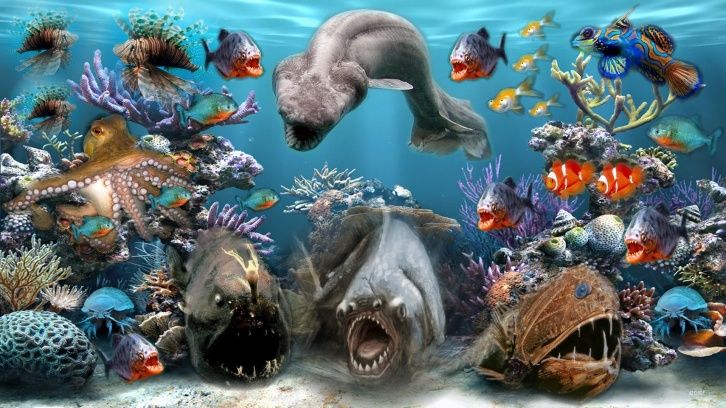
FAQ About Ocean Life

How do coral reefs form?
Coral reefs are complex and diverse ecosystems that form over long periods of time through the accumulation and growth of coral organisms. Here's an overview of how coral reefs form:
- Coral Larvae Settlement: Coral reefs begin with the settlement of coral larvae. Coral colonies release tiny, free-swimming larvae into the water column during mass spawning events, typically synchronized with specific environmental cues like water temperature and lunar cycles. These larvae float in the ocean currents, dispersing over varying distances.
- Larval Attachment: After a period of time, the coral larvae undergo metamorphosis and settle onto suitable substrate, which can be existing coral skeletons, rocks, or other hard surfaces. This settlement process is often selective, with larvae showing preference for certain types of substrate or areas with favorable conditions.
- Coral Polyp Reproduction and Growth: Once settled, coral polyps start to grow and divide through a process called asexual budding. Polyps are small, cylindrical animals that secrete a calcium carbonate skeleton to form a protective structure around their soft bodies. The polyps continue to reproduce, forming colonies that expand over time.
- Symbiotic Relationship with Algae: Coral polyps form a mutualistic symbiotic relationship with photosynthetic algae called zooxanthellae. These algae live within the tissues of the coral, providing oxygen and nutrients through photosynthesis. In return, the corals offer shelter and nutrients to the algae.
- Calcium Carbonate Deposition: As the coral polyps grow, they continue to deposit calcium carbonate (limestone) within their skeleton. This deposition, combined with the accumulation of dead coral skeletons and other calcium carbonate debris, builds the structure of the reef over time.
- Reef Building and Growth: As generations of corals grow and die, their calcium carbonate skeletons contribute to the formation of a three-dimensional reef structure. This structure provides a foundation for the growth of new coral colonies and supports a diverse range of organisms, including fish, invertebrates, and algae.
- Ecosystem Development: Over time, the coral reef ecosystem becomes highly complex and diverse. It attracts and supports a wide variety of species, creating a rich and productive ecosystem with interconnected food webs and important ecological functions.
